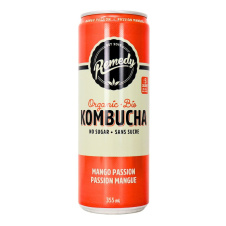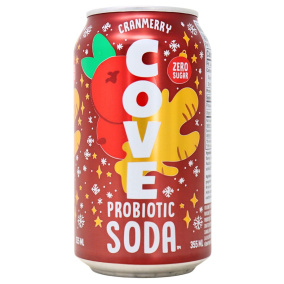
What is Kombucha?
The cat is out of the bag, our secret drink has made its way into the hands of many and now the people can’t get enough. It’s all over the place! Kombucha here, kombucha there, kombucha everywhere! So, why aren’t you drinking it yet? Are you telling us that you’ve never heard about this magical drink? Oh, dear friend, you’re so lucky to have us in your corner. We’ll tell you everything that you need to know about kombucha so you can maximize your health with this powerful drink. Here’s what you need to know:
What is Kombucha?
Kombucha (pronounced come-boo-cha) is a fermented drink made up of a combination of black or green tea, yeast, sugar, and bacteria. Now, we know what you’re thinking, why on earth would I drink something that sounds so unappetizing? Well, we’ll get to that later. But, for now you should know that the yeast and bacteria are just there to eat up the sugar and to ferment the drink, you can’t really taste it. And, believe it or not, you have likely consumed yeast and bacteria in other forms before like in beer or yogurt. Bacteria and yeast are actually very common in products and can play many different roles. In this particular case, the bacteria and yeast colony, termed SCOBY (Symbiotic Culture of Bacteria and Yeast), are responsible for adding a fizz and for giving kombucha the upper hand in the nutrition department.
What Does Kombucha Taste Like?
Nowadays, there are many kinds of kombucha available in all sorts of flavours, so it’s rather difficult to describe what it tastes like. In general, kombucha tastes like a sour, earthy and slightly sweet fizzy drink. Unlike traditional fizzy drinks, Kombucha is low in sugar or sugar-free, and may be naturally flavoured with fruits like mango, peach and berries.
How To Drink Kombucha?
Drinking kombucha is not as simple as you might think. How we drink kombucha and when we drink kombucha can affect our day, so it's important to get it just right. Since kombucha is a fermented super drink, you’ll have to take some things into consideration. First of all, kombucha may have alcohol, especially if prepared at home. Although the alcohol levels don’t typically compare to an alcoholic drink, having one too many kombuchas in the morning may leave you feeling a little tipsy.
Secondly, kombucha typically has caffeine, which can be a pro and a con. If you’re sensitive to caffeine, you may want to avoid drinking it at night time. But, if you’re looking for an all-natural pick-me-up or a morning coffee alternative, then having kombucha in the morning or mid-day may be beneficial.
Lastly, kombucha is a superfood rich in nutrients that your body may not be used to receiving. If you’re new to kombucha we recommend drinking it with meals. Your body may not be accustomed to drinking kombucha and may overreact if you try to drink it on an empty stomach. Additionally, if you drink it with meals you may have improved digestion and may feel fuller faster. However, once you build your tolerance to kombucha or if you’re already a seasoned pro, drinking it in the morning on an empty stomach will give you the most benefits!
How To Make Kombucha?
Making kombucha at home can be a fun experience, however it will require some expertise and a lot of patience. Making kombucha is a three part process that takes approximately 4-6 weeks to complete. Your kombucha will need to go through three stages: SCOBY, first fermentation and second fermentation. Stage one, making the SCOBY, takes the longest (about 4 weeks) and is typically the most difficult stage where most people (including us) give up and end up buying it instead.
When making kombucha at home you’ll have to remember a couple of things.
- Everything (and we mean everything) must be sparkling clean and at just the right temperature for it to work. If not, the SCOBY will become moldy, and all your hard work will be for nothing. Additionally, you could get food poisoning if it's not produced in a sterile environment.
- You’ll need to keep your kombucha far away from any plastic or metals as it can ruin the whole process. Say it with us, “glass only!”
- If you suspect that anything wasn’t done correctly during the process, you'll have to throw out the batch and start over.
- You’ll need to keep a close eye on the whole process, if not you might be dealing with exploding jars and unwanted messes.
- Despite wanting to make kombucha from scratch, you will still need to purchase store-bought kombucha to get the process started. So, it's up to you if you want to go through all the trouble of making it at home or just keep drinking the kombucha that is already in your hand!
Kombucha Recipe
Kombucha recipes can vary but in general they follow the same format. For most recipes you’ll need a large sum of clean water (about 1.5 litres), ½ cup of sugar or honey, 3-4 black or green tea bags, 1 cup of pasteurized store kombucha, a woven cloth (such as a cheese cloth or paper towels), rubber bands and a glass container.
Phase 1: SCOBY
To make the scoby you’ll need to bring the water to a boil, remove the pot from the heat, add the sugar, then the tea bags. Steep the tea bags until the water returns to room temperature. Add the store-bought kombucha and pour it into your glass container. Cover with the woven cloth and tighten with the rubber bands. Leave the container in a dark area for 1-4 weeks at around 20°C.
Phase 2: First Fermentation
Once you’re ready to brew, remove the SCOBY from the tea concoction, and get ready to repeat the process again except this time you’ll need more water and you won’t be making a SCOBY. Repeat the steps but do not cover your container just yet, you’ll need to add the SCOBY first. Once the SCOBY has landed, secure with the woven cloth and rubber bands. Allow it to rest in similar conditions for about a week.
Phase 3: Second Fermentation
For the second fermentation you’ll need a sample (about 2 cups) of your previous concoction to get the party started. At this point you can also add your own flare to the kombucha with some additional toppings like fruit or seeds. Start off by straining your previous kombucha mixture into your glass containers and leave some space at the top. Add your sugar or honey, and any desired toppings. Cover and seal like before and place in a dark room to ferment for another 10 days. And, that’s a wrap! Now, you can sip, sip, hooray!
What Are The Health Benefits of Kombucha?
Now, for the juicy part! Kombucha has been praised for its health benefits for centuries, and rightfully so! Kombucha packs a powerful punch in the health department. Here’s what it can do for you:
- Can Help Prevent Disease: Made from tea, Kombucha carries all of the antioxidants heavily found in green and black tea. But, since Kombucha requires fermentation, this process adds an extra boost of antioxidants. Antioxidants are notorious for their role in disease prevention. Kombucha in particular may boost your immune system, help to detox the body from harmful material (specifically the liver), reduce inflammation and fight infections and chronic conditions like diabetes and heart disease.
- Can Improve Gut Health: Kombucha is most known for its probiotic properties that can improve your overall gut health. Probiotics are essentially helpful bacteria that make your gut and overall body happy. Your gut health/gut bacteria control everything from mental health to your body weight to your immune system to your digestion. So, getting your daily dose of probiotics through a tasty drink isn’t a bad idea.
- Can Promote Weight Loss: Kombucha typically contains green tea, which has a reputation for being one of the healthiest drinks on the planet. Coincidentally, one of its benefits is its ability to boost your metabolism, helping you burn more calories and preventing excess fat storage. Since the green tea remains practically untouched in the kombucha making process, you might be able to reap the weight maintenance benefits of green tea if consumed regularly.
- Can Improve Blood Sugar Levels: When consumed around meal time, kombucha may stabilize the digestion of sugars preventing blood sugar spikes. Additionally, it may support the health of the liver and kidney, which are often affected by high blood sugar levels. If you struggle with poor glucose control, ensure to drink only the low-sugar kombucha options.
- Can Improve Heart Health: Green tea is famous for its ability to reduce the amount of bad cholesterol in our bodies. And, since kombucha contains green tea, you might see these benefits with kombucha as well.
- Can Improve Brain Function: Kombucha contains a wide range of vitamins, minerals and probiotics, all of which can affect our brain function. The vitamins, specifically the B-vitamins can help to energize the body meanwhile the probiotics can help prevent against mental illness, and brain disease such as Alzheimers.
The Bottom Line:
Kombucha is a functional food praised for its health benefits like it’s high dose of probiotics and antioxidants. Kombucha appears to provide the most benefits when consumed on an empty stomach, but if you’re not used to it you’ll need to build your tolerance by consuming it with meals. You can choose to make your own kombucha at home but you do run some risk by doing so. DIY-ing kombucha may result in exploding jars and food poisoning if not done properly. Additionally, you’ll need to add some store-bought kombucha to your home recipe, so it may not be worth the risk if you’re already buying a bottle of pre-made kombucha. Kombucha comes in many flavours that appeal to many different types of preferences. To get the most out of your kombucha, choose kombucha that is low in sugar! You can find kombucha in Canada right at Natura Market. Get yours here!
Happy sipping!








